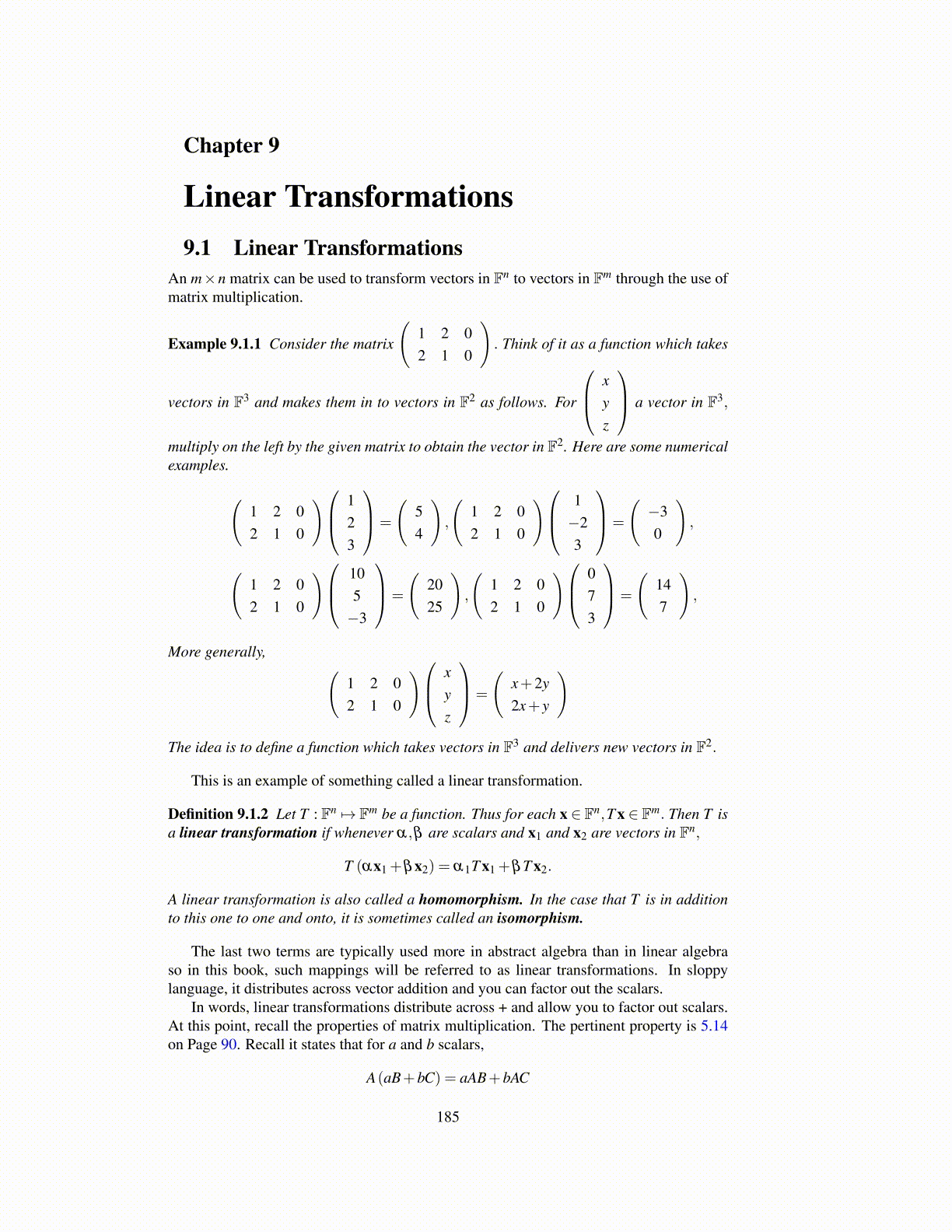
Chapter 9
Linear Transformations9.1 Linear Transformations
An m×n matrix can be used to transform vectors in Fn to vectors in Fm through the use ofmatrix multiplication.
Example 9.1.1 Consider the matrix
(1 2 02 1 0
). Think of it as a function which takes
vectors in F3 and makes them in to vectors in F2 as follows. For
xyz
a vector in F3,
multiply on the left by the given matrix to obtain the vector in F2. Here are some numericalexamples.
(1 2 02 1 0
) 123
=
(54
),
(1 2 02 1 0
) 1−23
=
(−30
),
(1 2 02 1 0
) 105−3
=
(2025
),
(1 2 02 1 0
) 073
=
(147
),
More generally, (1 2 02 1 0
) xyz
=
(x+2y2x+ y
)
The idea is to define a function which takes vectors in F3 and delivers new vectors in F2.
This is an example of something called a linear transformation.
Definition 9.1.2 Let T : Fn 7→ Fm be a function. Thus for each x ∈ Fn,T x ∈ Fm. Then T isa linear transformation if whenever α,β are scalars and x1 and x2 are vectors in Fn,
T (αx1 +βx2) = α1T x1 +βT x2.
A linear transformation is also called a homomorphism. In the case that T is in additionto this one to one and onto, it is sometimes called an isomorphism.
The last two terms are typically used more in abstract algebra than in linear algebraso in this book, such mappings will be referred to as linear transformations. In sloppylanguage, it distributes across vector addition and you can factor out the scalars.
In words, linear transformations distribute across + and allow you to factor out scalars.At this point, recall the properties of matrix multiplication. The pertinent property is 5.14on Page 90. Recall it states that for a and b scalars,
A(aB+bC) = aAB+bAC
185